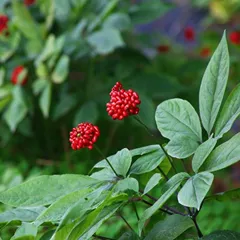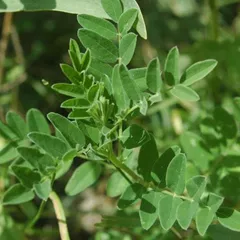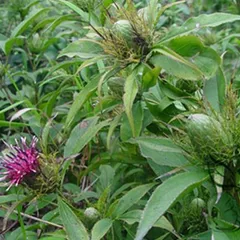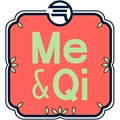Spleen not controlling Blood
The information provided here is not a replacement for a doctor. You shouldn't use it for the purpose of self-diagnosing or self-medicating but rather so you can have a more informed discussion with a professional TCM practitioner.
At a glance
Preliminary reading: What is a pattern? The Spleen in Chinese Medicine The concept of Blood
Key attributes
Chinese name: 脾不统血 Pinyin name: Pí Bù Tǒng Xuè
Pattern nature: Empty
Causes
Precursor patterns: Spleen Qi Deficiency Spleen Yang Deficiency Lung Qi Deficiency and one other possible precursors
Common causes: 1. Diet, 2. Emotional stress, 3. External Dampness
Diagnosis
Common symptoms: Fatigue Lassitude Weak Limbs Depression Loose stools and seven other symptoms
Pulse type(s): Weak (Ruo), Fine (Xi)
Tongue description: Pale
Treatment
Treatment principle: Tonify Spleen Qi, stop bleeding.
Common formulas: Gui Pi Tang
Pathology
When Spleen Qi is Deficient, which is a pre-requesite in this case, the Spleen cannot fulfill its function of holding Blood in the vessels.
This is why bleeding symptoms appears all over the place: under the skin, in the stools, the urine or from the Uterus.
Causes
Precursor patterns: Spleen not controlling Blood can derive from Spleen Qi Deficiency Spleen Yang Deficiency Lung Qi Deficiency Spleen Qi Sinking
Diet: Excessive consumption of cold and raw foods can hinder the Spleen's function of transformation and transportation, which indirectly leads to this pattern. The Spleen prefers warm foods. Other bad dietary habits that may cause Spleen not controlling Blood include eating at irregular times, chronic under or over eating as well as eating a diet poor in Blood-forming grains and meats.
Emotional stress: 'Pensiveness" (thinking too much, brooding, thinking about the past) makes Qi stagnate, which affects the Spleen because of its strong connection with Qi. Similarly Worry ‘knots’ Qi, which also makes it stagnate and also affects the Spleen.
External Dampness: "The Spleen loathes Dampness": prolonged exposure to dampness (either from weather or from the place of living) weakens the Spleen and may lead to this pattern.
Diagnosing Spleen not controlling Blood
Diagnosing a pattern in Chinese Medicine is no easy feat and should be left to professional practitioners. In particular one has to know how to differentiate between different types of pulses and tongue coatings, shapes and colors as well as learn to read from a long list of seemingly unrelated symptoms.
Pulse type(s): Weak (Ruo) or fine (Xi)
Tongue description: Pale
Main symptoms: Fatigue Lassitude Weak Limbs Depression Loose stools Bloody urine Poor appetite Bloody stools Pale complexion Abnormal uterine bleeding Blood spots under the skin Slight abdominal distention after eating
Diagnosis commentary: The key characteristic symptoms of this pattern are the Fine Pulse, the Pale tongue and the various bleeding-related symptoms (blood spots under the skin, bloody urine or stools, excessive uterine bleeding). In general if one sees bleeding as a symptom, roughly half the cases are due to Spleen not controlling Blood (a Deficient pattern) and half to Heat in the Blood (an Excess pattern).
Treating Spleen not controlling Blood
Treatment principle
Tonify Spleen Qi, stop bleeding.
Herbal formulas used to treat Spleen not controlling Blood



The top herbs in Gui Pi Tang are Ginseng (Ren Shen), Milkvetch Roots (Huang Qi) and Atractylodes Rhizomes (Bai Zhu)
Gui Pi Tang
Source date: 1529 AD
Number of ingredients: 12 herbs
Key actions: Tonifies and nourish Qi and Blood. Tonifies Heart and Spleen.
Formula summary
Gui Pi Tang is a 12-ingredient Chinese Medicine formula. Invented in 1529 AD, it belongs to the category of formulas that tonify Qi and Blood.
Besides Spleen not controlling Blood, Gui Pi Tang is also used to treat Qi Deficiency or Blood Deficiency.
Diet recommendations
The best step one can take to avoid or mitigate Spleen not controlling Blood is to adopt proper dietary habits. As such one should avoid the excessive consumption of cold and raw foods (like salads or cold drinks), eating at irregular times or chronically eating too much or too little.
Less easy to do, since excessive pensiveness and worry are key contributing factors, efforts should be made to steer clear of those emotions.
Lastly if you live in a damp environment (the exterior air or inside your home), try to do something to avoid overexposing yourself to dampness. The Spleen loathes Dampness.
Consequence patterns
If the bleeding that is characteristic of Spleen not controlling Blood persists for some years, it may lead to generalized Blood Deficiency.
Since Blood is the mother of Qi, if the bleeding characteristic of this pattern persists for some years, it may lead to generalized Qi Deficiency.
If left untreated Spleen not controlling Blood can lead to Phlegm and/or Dampness
If left untreated Spleen not controlling Blood can lead to Spleen Yang Deficiency
If left untreated Spleen not controlling Blood can lead to Spleen Qi Sinking
If left untreated Spleen not controlling Blood can lead to Heart Qi Deficiency
If left untreated Spleen not controlling Blood can lead to Lung Qi Deficiency
If left untreated Spleen not controlling Blood can lead to Kidney Yang Deficiency
